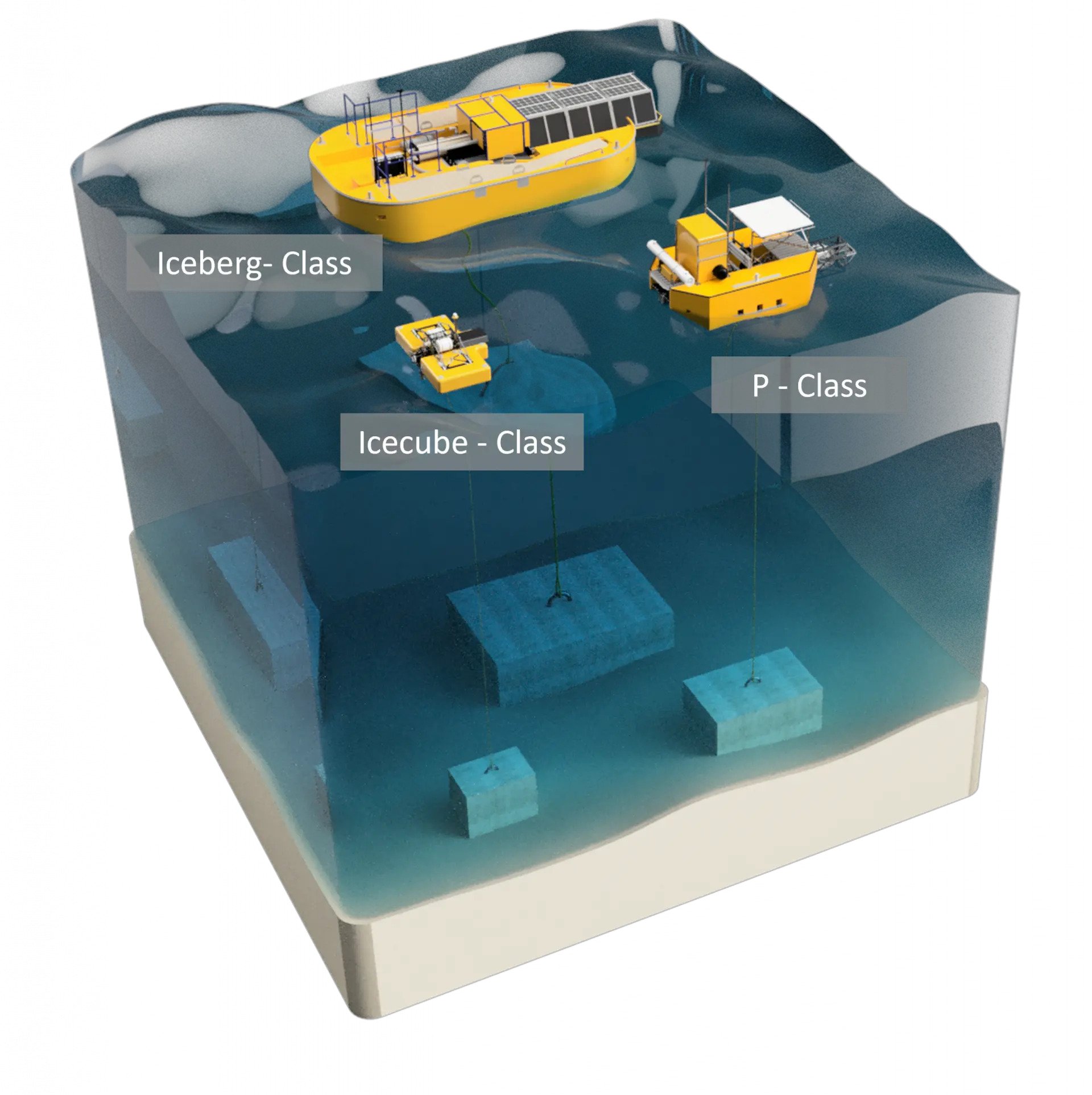The Ocean Cleanup: working to free the seas of plastic waste
The Ocean Cleanup venture: a revolutionary idea aimed at steering the waste toward a collecting point rather than going after it
Made from recycled plastic, the new floating desalination plant harnesses the sea's energy to produce fresh water.
A U.S. Energy Information Agency (EIA) study estimated that the energy generated by waves reaching the U.S. coast alone would be enough to cover 64% of the country's energy consumption. Considering the potential of wave power, and the fact that the oceans account for 97% of the world's water, it was only a matter of time before desalination plants based on ocean energy, whether wave, tidal, or wind power, were explored. A new prototype of a floating desalination plant confirms the interest in these sustainable technologies.
A Canadian company has demonstrated the feasibility of the concept through a modular desalination buoy system. The primary device consists of a floating platform anchored to the seabed with a pipeline that transports freshwater to shore.
Codenamed Iceberg class, the initial device uses wave energy to pump water under pressure into a reverse osmosis desalination system, which is the most widespread technology and sustainable among desalination plants. Once the seawater passes through a system of membranes, the salt is removed, with up to 50 cubic meters of water produced daily. This quantity is enough to cover the needs of one hundred families of four people.

However, the system is designed to be modular and scalable. On the one hand, several units can be installed side by side; on the other hand, there are units of different sizes. In addition to the current basic model, there are two smaller ones. The smallest one is intended as an easy-to-install platform for instant freshwater generation in case of humanitarian catastrophes in coastal areas. It would be the equivalent of this other portable desalination plant discussed recently.
In principle, the desalination plant can operate with waves reaching a minimum height of one meter, while the seabed must have a depth of between thirteen and thirty meters. In terms of dimensions, the Iceberg class machines are eight meters long by five meters wide and weigh eleven thousand kilograms.
The new floating desalination plants have been conceived with a circular economy focus from the outset. In addition to using wave power to pump the water and solar energy to control the onboard sensors, they are made mainly from recycled plastic. Specifically, the basic model recycles up to 170,000 plastic bottles. They are also equipped with meshes for environmental protection that prevent the desalination plant from sucking in marine life.

Finally, the developers claim that each unit has a useful life of fifteen to twenty years and only requires three to seven visits per year for maintenance. For now, the amount of freshwater produced is limited, and work is underway to develop floating desalination plants on an industrial scale. These first units should enter the testing phase during 2023.
Canadian desalination buoys are one of many initiatives proliferating in recent years. For example, the U.S. National Renewable Energy Laboratory (NREL) has been testing a prototype with promising results. Similar in design to a Zodiac-type inflatable boat, its system also harnesses wave energy to carry out the desalination process and pump the water to shore.
Another prototype of a floating desalination plant based on wave energy was recently installed in the Canary Islands, this time by a Norwegian company. The Gaia buoy, weighing 100 tons and seven meters in diameter, has been undergoing tests since 2022 in the port of Las Palmas de Gran Canaria. It is expected that, once the results of the experience are known, larger platforms with commercial applications will be installed.
As can be seen, these prototypes are, for the most part, at an experimental stage, although they may play a significant role in the freshwater challenge in the future.
If, besides floating desalination plants, you would like to know more about fully operational desalination technologies and their potential to meet humanity's drinking water needs in the coming years, we recommend you check out this article. And, if you are interested in learning about the full potential of offshore renewable energies, such as tidal and wave power, you can check out this other article.
Source:
All fields are mandatory.
Read the most discussed articles
{{CommentsCount}} Comments
Currently no one has commented on the news.
Be the first to leave a comment.
{{firstLevelComment.Name}}
{{firstLevelComment.DaysAgo}} days ago
{{firstLevelComment.Text}}
Answer{{secondLevelComment.Name}}
{{secondLevelComment.DaysAgo}} days ago
{{secondLevelComment.Text}}